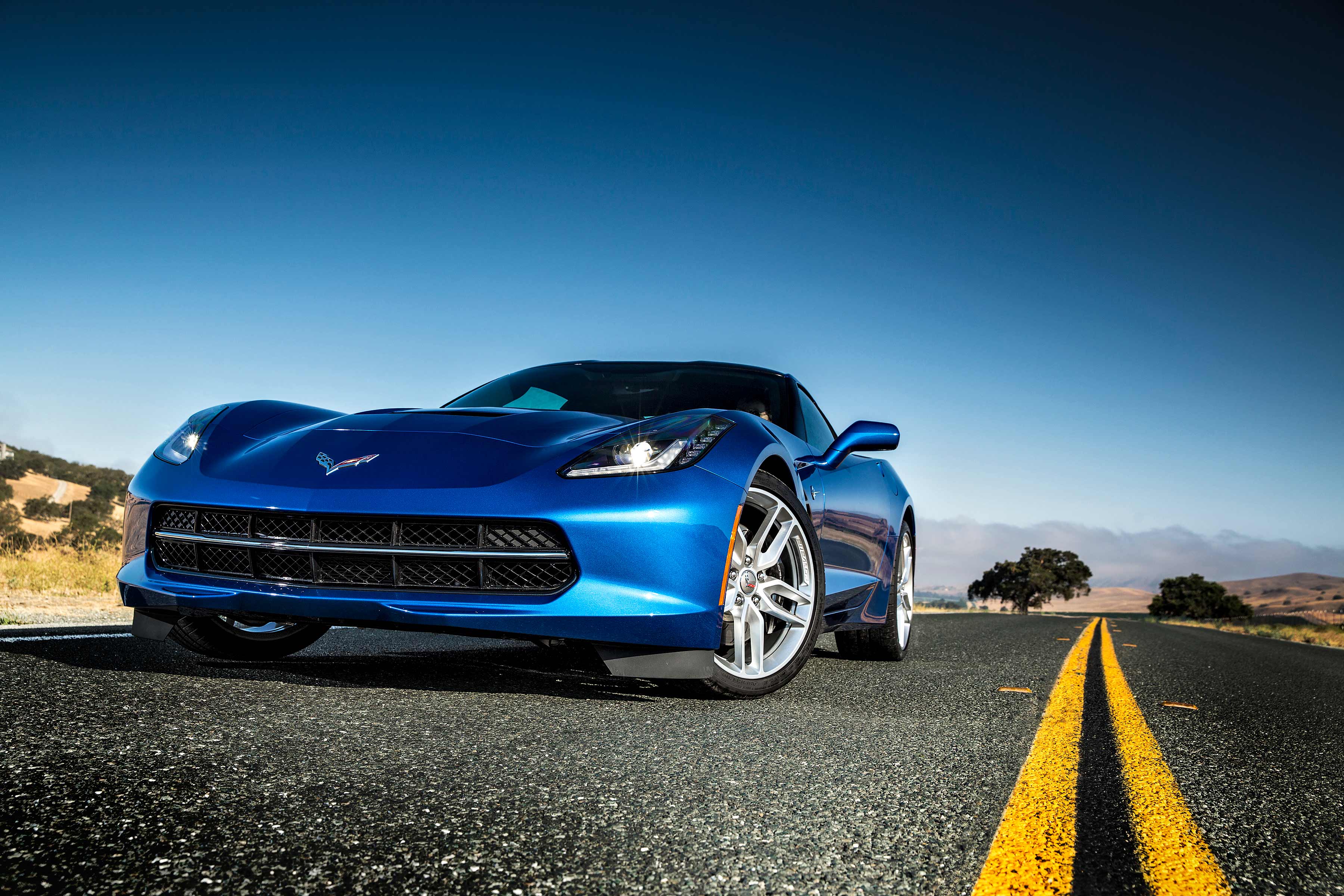
In one fell swoop, the 2014 Chevrolet Corvette Stingray landed itself at the top of my own 2013 Top 10 list. Not by choice, but by merit.
Maybe it's because the Viper GTS hasn't landed in my lap, but I thought for sure the MP4 12C had that locked up and key thrown away. Even the SLS AMG GT didn't make second fiddle.
That's heresy. Right?
It turns out the more affordable, road-sucking C7 Stingray did more than impress in Monterey, Calif. this summer. It came of age, and I bore witness.
Compared to baseball cards, chewing gum and beer drinking hats, the Corvette is as American as is gets. Only now it's a lot more refined. Inside and outside. Through and through.
The seventh-generation's all-new LT1 engine is a thing of beauty. On paper, and on the road. The lightweight and dulcet 6.2-litre V8 makes 460 horses and 465 torques, while the seven-speed manual transmission and electronic LSD (eLSD) ensure this is the most advanced Corvette to date. Not by a little bit either.
It also happens to be the most fuel efficient Corvette ever. GM says it achieves 30 mpg when cruising in V4 mode where it produces 126 hp and 221 lb-ft of torque at 3,000 rpm. Mercifully, the Eco mode must first be engaged.
 I just couldn't bring myself to do it. And like it or not, it does work. Perhaps too well. Corvette cultists could rise up. All I know is my Crazy Canuck co-driver urged me not to even speak of it. But it's there. Like a scab. You want to peel it off, but you just know it's better left to fall off on its own.
I just couldn't bring myself to do it. And like it or not, it does work. Perhaps too well. Corvette cultists could rise up. All I know is my Crazy Canuck co-driver urged me not to even speak of it. But it's there. Like a scab. You want to peel it off, but you just know it's better left to fall off on its own.
This is, after all, the most capable standard Corvette ever. And the optional Z51 performance package fitted to my test car more than makes up for it. This is not the most powerful Corvette ever and there are no doubt more powerful ZR and Z0 models coming down the pipeline, but for now the Z51 is the cat's ass.
The Z51 kit adds dry sump oil, differential and transmission coolers, high-performance gear ratios, aero parts, unique chassis tuning, the eLSD and Michelin Pilot Super Sport ZP ultra-high performance tires developed exclusively for the Stingray on staggered 19- and 20-inch forged wheels. Michelin has developed two versions of this tire, in fact. One for the standard car. Another for this particular trim.
Equipped thusly, the Stingray can sprint from zero-to-97 km/h (60 mph) in 3.8 seconds. It runs the quarter-mile in 12 seconds at 191.5 km/h (119 mph), and its larger slotted steel brakes (13.6 and 13.3 inch diameters in the front and rear, respectively) with four-piston Brembo calipers and cooling ducts haul the C7 back down from 97 km/h in 326 metres (107 feet).
The optional true dual-mode performance exhaust is said to bump horsepower and torque by five units apiece, improves airflow by 27% and ameliorates sounds quality by closing some valves during V4 mode.
My car is also equipped with GM's Magnetic Ride Control active-handling system and its accompanying Performance Traction Management (PTM) system, and on this day conditions are ripe to stretch the Vette's lungs and rubber to “...feel those centrifugal forces,” as one resident put it, to the fullest effect.
I have a race car driver riding shotgun next to me (and will remain anonymous for reasons that will become obvious) and a Canadian Motorsport Hall of Fame 2013 inductee right behind me in another a metallic blue Z51. Now, I would be in real trouble if that were the “Mayor of Mosport” in my mirrors, but it is only Jacques Duval (79) playing cat to my mouse. Among other accomplishments in his racing career, Duval won the very first Grand Prix of Trois-Rivières in 1967.
We punch it pretty hard for mile and after twisty and bumpy mile, picking off mouse after slower mouse in the process of tearing up Cienega Road. Deeply-eroded ditches, falling rocks, broken and crowned asphalt, big hills, compressions, loose gravel and giant potholes increase the pucker factor. The Stingrays engorge themselves on the many technical, off-camber, blind and even sketchy corners the route provides before it straightens out and begets more lewd driving behaviour from our wave of drivers.
The car's sport-tuned magnetic ride suspension helps achieve 1.03 Gs of cornering addiction, and tire heat sensors work in unison to maximize performance via specific ECU algorithms with calculations based on cornering, braking and accelerating. The hotter the tires are, the more performance the car allows you.
The patented tire temperature system works like this: the TPMS valve stem uses a built-in temperature sensor to establish a base or start-up temperature. “It then has algorithms to estimate how the tire temperature is changing at the patch based on how much energy you are putting into the car,” says Tadge Juechter, Corvette Chief Engineer.
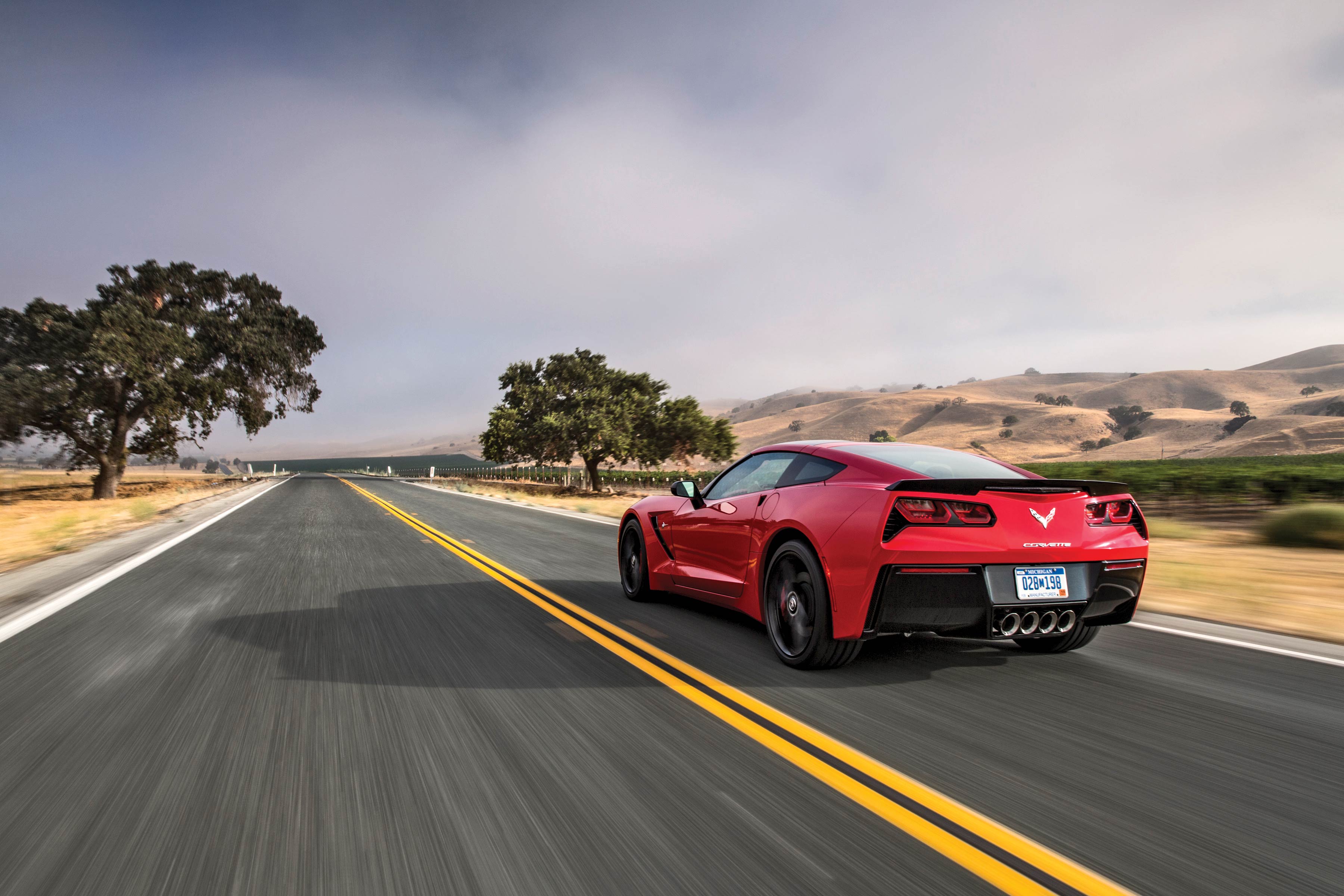 If you're driving modestly hard, it will predict a small change in temperature as the tires warm up, but if your driving very hard like you would on a track or an autocross course, it will predict a big change as the tires become very hot. “This is important because the vehicle uses that information in the rest of the controls, whether it's ABS, (the eLSD) or stability or PTM,” explains Juechter. “All those systems really benefit from knowing whether the tires are cold, warm or really hot.” In fact, cold tires (under 45 degrees Fahrenheit) generate only 70% of maximum grip. Warm tires (between 45 and 115 degrees) generate 90%. Hot tires (above 115 degrees) get the whole grip enchilada.
If you're driving modestly hard, it will predict a small change in temperature as the tires warm up, but if your driving very hard like you would on a track or an autocross course, it will predict a big change as the tires become very hot. “This is important because the vehicle uses that information in the rest of the controls, whether it's ABS, (the eLSD) or stability or PTM,” explains Juechter. “All those systems really benefit from knowing whether the tires are cold, warm or really hot.” In fact, cold tires (under 45 degrees Fahrenheit) generate only 70% of maximum grip. Warm tires (between 45 and 115 degrees) generate 90%. Hot tires (above 115 degrees) get the whole grip enchilada.
The tire temperature system is a great idea that works well in practice, but there may be headaches when installing aftermarket wheels and/or slicks for track use because it is so embedded into the vehicle's programming. That said, the valve stems ought to carry some GM part number; and, perhaps most importantly, according to Lee Willard, Michelin's own Mr. Corvette, development of the ZP tires was done independently from the system.
At any rate, the magnetic-ride shocks on this Corvette Stingray make it handle fan-freaking-tastic! The electric steering has nice weight and more feeling than some German sports cars I've driven lately, and the PTM knob lets you dial in the car precisely the way you want it.
Pressing the traction control button twice opens the PTM menu and allows access to the Weather, Eco, Touring, Sport and Track programs – those on the left being the more restrained or conservative, and those on the right being more liberal to extreme, just like real-life politics – which automatically adjusts up to 12 different parameters.
The five-position selector knob and the ability to turn the traction control system completely off is standard on the C7, but only the Z51-equipped cars can explore the full potential of PTM. The eight-way power adjustable sports seats boasting lightweight magnesium frames are also standard. Only the standard GT seats are available for testing, though a competition version with more aggressive side bolstering for greater support on the track is also available. The base buckets, however, are quite alright as is.
Standard too is the 14.1-inch diameter steering wheel and paddles for greater precision and control. The paddles do what you expect them to when paired with the six-speed automatic transmission, and turn the active rev matching system on or off when paired with the seven-speed manual. In the case of the latter, I find it very quick, accurate and quite useful while dipsy-doodling around on these uncharted (to me) technical roads. It's probably not my preference for my favourite Canadian road course, but the shift knob itself is smooth and has great action. Despite the seven gears feeling quite close together, I manage to not miss a single shift.
The active rev matching system uses a sensor attached to the bottom of the shifter to telegraph the drivers intent by sensing what they are doing with the shifter. As the shifter moves toward the gate you're switching to (up or down), you'll watch the engine jump in anticipation of the revs you'll need to maintain speed.
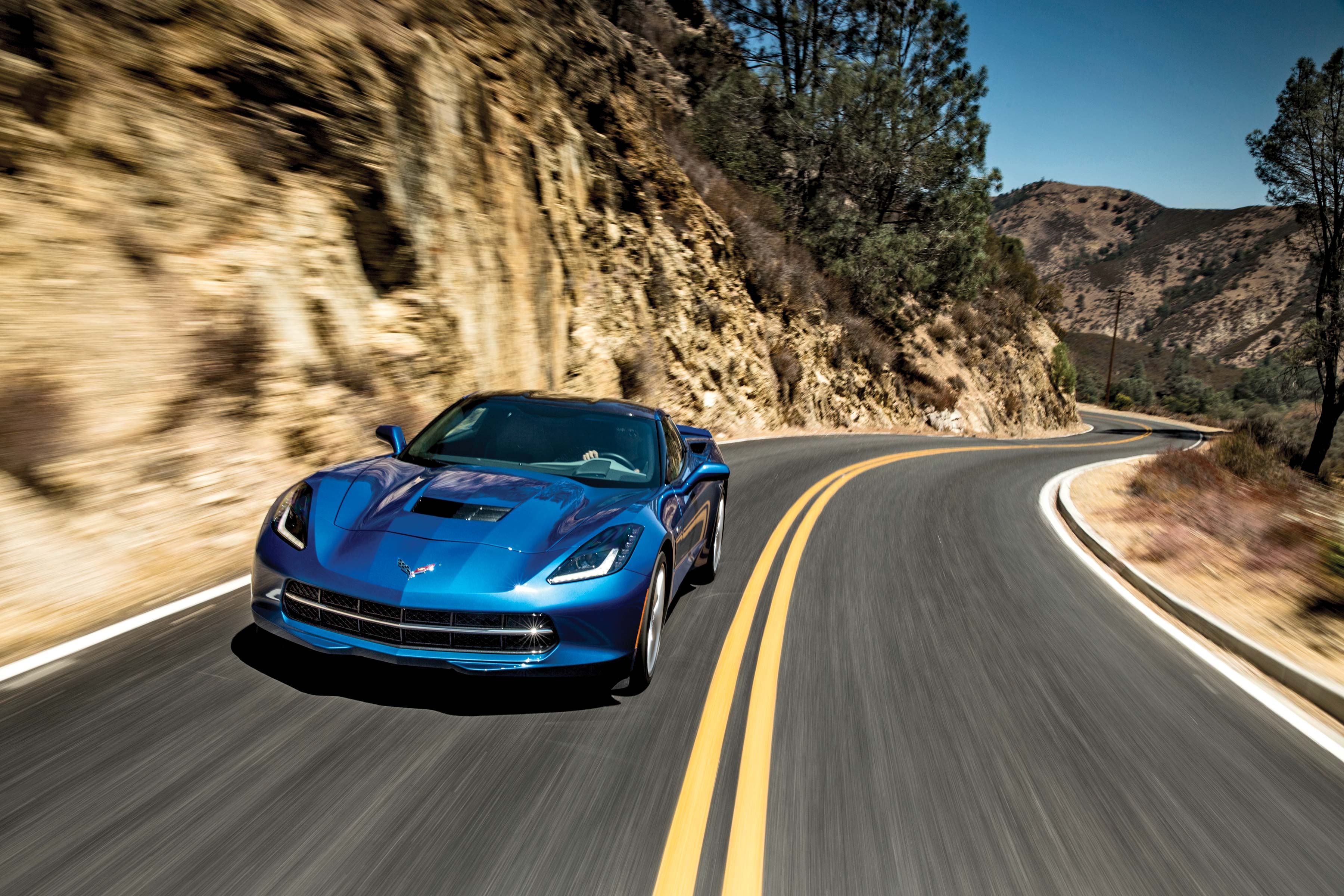 Though more aggressive-looking and functional, the C7's exterior dimensions are relatively unchanged compared to its predecessor. Its length, width, height, wheelbase and track are all within an inch of the C6's figures. Underpinned by its entirely-new aluminum frame, however, the 1,562-kg (3,444 lb) starts off 45 kg (99 lb) lighter and 57% stiffer than the C6. Though the physical differences seem minimal, the results are maximal. The advanced HID and LED lighting looks killer too.
Though more aggressive-looking and functional, the C7's exterior dimensions are relatively unchanged compared to its predecessor. Its length, width, height, wheelbase and track are all within an inch of the C6's figures. Underpinned by its entirely-new aluminum frame, however, the 1,562-kg (3,444 lb) starts off 45 kg (99 lb) lighter and 57% stiffer than the C6. Though the physical differences seem minimal, the results are maximal. The advanced HID and LED lighting looks killer too.
The C7's aluminum frame is lighter and stronger than the outgoing steel structure, and is paired with composite fenders, doors and rear quarter panels as well as carbon-nano composite underbody panels that achieve a 50/50 weight balance. A carbon fibre hood on all models, and the coupe's removable roof panel (carbon fibre optional) ensures a low gravity centre and shifts the weight slightly rearward. My silver metallic car has a tinted polycarbonate roof that lets you enjoy the open sky, even on rainy days.
Here's a rainy day stat: the C7 shares only two parts with the previous generation – the rear latch for the removable roof and the cabin air filter.
But it is the eLSD that has perhaps the hugest impact on how this new Corvette performs. “Having a differential that can go from open to nearly clamped all the way shut has a huge impact on the way the vehicle handles,” says Juechter, especially since the tires are so large and so sticky. And because the eLSD is continuously variable rather than an on/off or stepped system, the car can continuously adjust the pressure on the plates in the clutches to vary the torque being transmitted across the differential in real-time.
In sport mode, out in the canyons, the PTM and eLSD work seamlessly to provide confidence. You see, the eLSD can make the car both more responsive and more stable. Opening the differential lets the car turn in much more easily, and get the traction down coming out of the turn. eLSD can stabilize the car without slowing it down, which is a big win for a performance car.
“Because of our close ties to our C6.R race program, we are very connected to the race car designers and what they focus on in making a vehicle work well,” says Juechter. “We really took that same mentality and those same lessons literally from the race car... Every surface is engineered to make the car work better just as the race car is.”
The forward-tilted radiator and functional hood grille is a great example. Like on most race cars, the air for the radiator is drawn in through the top of the car. Similarly, the rear vents and the way air is managed underneath the car is integral in cooling major components such as the rear transaxle and brakes. There's even a closed circuit cooling system for the transmission and differential lubricants back there.
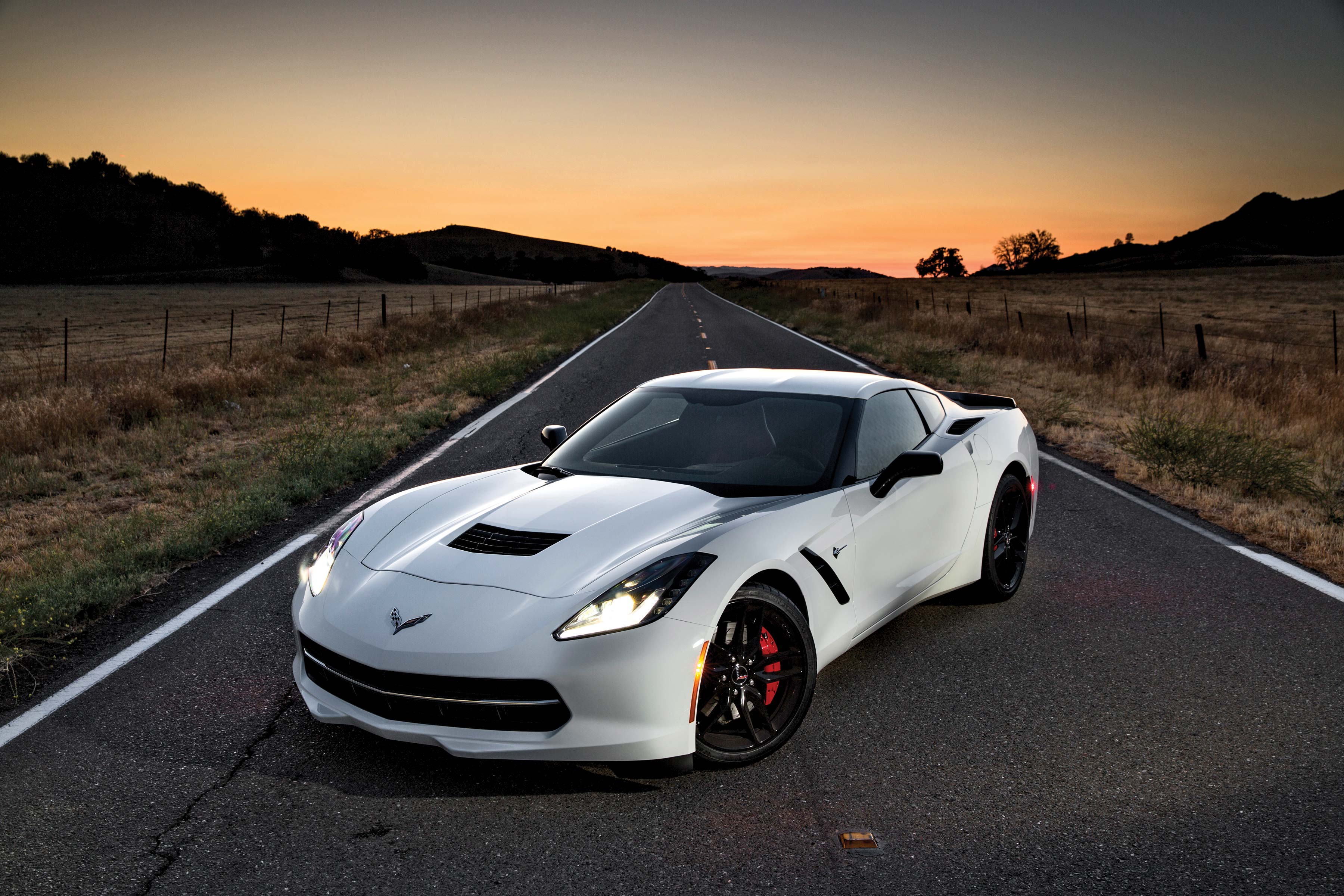 “We take cooling air in through these (top) vents,” he points out. “Then we have heat exchangers in the rear corners and, after it cools off the fluids, the warm air exits out of functional grilles in the rear.” This is another example of taking specific race car techniques and strategies and applying them to a street car. And, thanks to special 10 mm layer of space age “Aerogel” that lines the sides of the centre tunnel (5 mm top layer), the interior doesn't get uncomfortably hot after long spirited drives.
“We take cooling air in through these (top) vents,” he points out. “Then we have heat exchangers in the rear corners and, after it cools off the fluids, the warm air exits out of functional grilles in the rear.” This is another example of taking specific race car techniques and strategies and applying them to a street car. And, thanks to special 10 mm layer of space age “Aerogel” that lines the sides of the centre tunnel (5 mm top layer), the interior doesn't get uncomfortably hot after long spirited drives.
Speaking of the interior, not a single part from the C6 has found its way to the C7, and looking around you see nothing but prime materials and finishes. Even if you don't get a Nappa leather interior, all of the components are fully-wrapped, stitched and look very premium. My test mule further benefits from a carbon fibre interior appearance package in addition to the 3LT package (see essentials for more).
Driver and passenger are separated by a wraparound-style cockpit reminiscent of a jet fighter that arms the driver with everything needed to enjoy this car fully and completely within arm's reach.
Customizable dual eight-inch driver (instrument cluster) and infotainment (centre stack) HD screens with next-generation MyLink system and rear vision camera are standard, and allow for many different configurations and apps. The latter display boasts a compartment behind the display that's perfect for storing Bluetooth-connected phones or other devices out of sight. However, the former display is even cooler in that it has all kinds of interesting and customizable screens for touring, sport and track driving modes. The track theme is actually modeled from the display in the C6.R race car and features a lot of the same types of instrumentation, as well as includes things like a built-in lap timer, tire temperature readout, shift points and more.
After swapping seats at the driver change point, we head back out onto the No. 25 Airline Highway, which features more long sweeping corners, dips and crests and long straightaways where the eye can see for miles. It is one of these straights that my personal Stiggy's right foot starts to itch. With a bit of scratching, the car is flying along at 250 km/h whilst completely stable.
Before long we catch up to the only other Stingray that left the parking lot ahead of us. Its driver seems to know what he's doing so we stay in close proximity to check out its moves. With road debris getting flung up into our cabin by the sticky tires ahead, however, we back off a bit. Just in time too as coming into a hard left-hander at speed, a deer decides to jump into its path to test the driver's reflexes. It was a very close call, but the driver doesn't flinch as we both wince at the sight. Had there been contact, Bambi would have likely landed in my lap.
The road continues, stretching up and down like a never-ending caterpillar. A bit further along, the car in front seemingly drops out of sight over a crazy left-banking crest, almost like it had left the road. A few moments after a collective gasp, we crest the hill only to see the little red Corvette getting smaller up ahead. After catching up once again, the two cars cruise in tandem toward the lunch spot deep in the vineyards of Steinbeck's Wrath country.
“I'm hard pressed to believe that the steering is electrically assisted,” asserts my anonymous cohort. “It's remarkably good and a thousand times better than the C6 steering.”
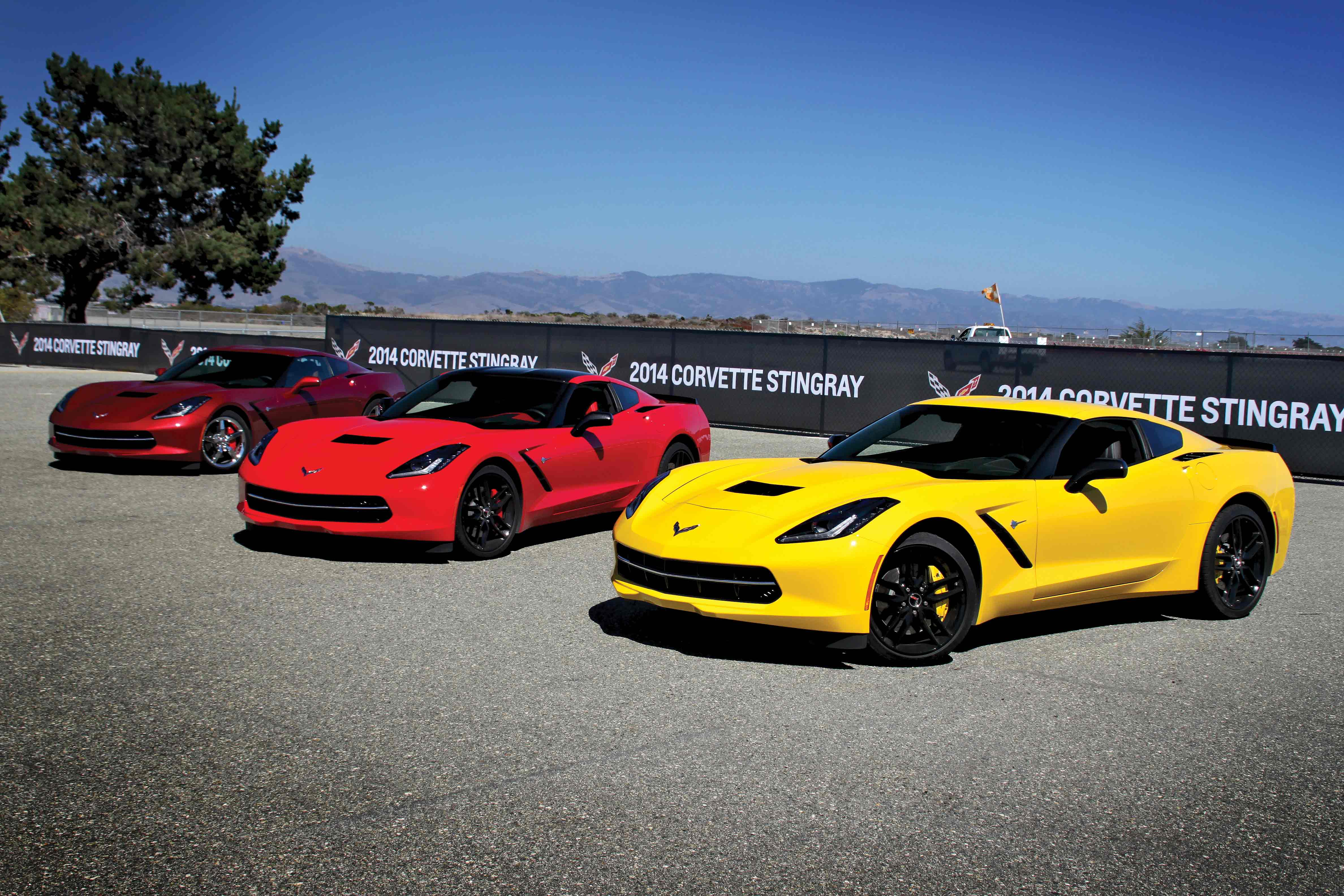 Trying out the optional premium surround sound system, some Simple Minds at full volume crank through loud and clear with the top off in California's northern wine territory. A Bose nine-speaker audio system with SiriusXM Satellite radio, Bluetooth connectivity, USB and SD card and auxiliary input jack come standard along with keyless entry, push-button start and a power tilt/telescoping steering wheel.
Trying out the optional premium surround sound system, some Simple Minds at full volume crank through loud and clear with the top off in California's northern wine territory. A Bose nine-speaker audio system with SiriusXM Satellite radio, Bluetooth connectivity, USB and SD card and auxiliary input jack come standard along with keyless entry, push-button start and a power tilt/telescoping steering wheel.
Another memorable moment comes just a few miles from lunch when the car in front comes to a stop in the lane in front of us. We pull alongside to see what's the matter? “Hey, everything okay?” I ask the other driver. “Oh yeah, I was just going to try out the launch control.” “Oh yeah cool,” I reply. But, my driver had already switched off the traction control completely before leaning over and asking, “What, like this?” as he peels away, leaving a couple of matchsticks of his own.
For the second time today we let out some hearty chuckles, and giggle off toward our destination. This whole day has been what some people might consider a religious experience. I know I do. It's been an experience I won't soon forget, an experience that's left me wanting more. Having driven quite the cast of cars this summer, I can't help but think what incredible value the C7 provides. I can hardly wait to get one out on a track next season that is for sure.
Pricing for the 2014 Corvette Stingray coupe starts at $52,745 while the convertible stickers at $58,245. The Z51 package on the 1LT trim starts at $56,520 and the Z51 3LT trim starts at $64,975, both exceptional performance values. Note: prices exclude a $1,700 destination fee, taxes, title and license fees.
There's more to this story as you will discover in the following pages, but let me leave you with one more nugget. Corvette has been doing some testing at the Nurburgring and rumour has it the car is down near the seven-minute mark. Nothing official has been posted yet, but when it is I'm sure it will start with a six.
2014 Corvette Stingray
Base Price: $52,745
Price as Tested (before taxes): $56,520 (w Z51 pack); $64,975 (3LT)
Engine: LT1 6.2L V8
Horsepower / Torque: 455 hp / 460 lb-ft
Configuration: FR
Transmission: 7-speed manual with Active Rev Match paddle shifters; six-speed automatic with paddle shifters
Curb weight: 1,562 kg (3,444 lb)
Fuel Economy Ratings (city / hwy. / comb.): 12.2 / 6.9 / 9.8 L/100 km
Warranty (mos / km): 36 / 60,000
Options on Test Vehicle: 3LT interior package includes: Bose, 10-speaker surround-sound audio system; SiriusXM radio with one-year subscription and HD radio receiver; colour HUD; memory package; navigation system; heated and ventilated seats with power lumbar and bolster adjustment; premium Nappa leather seating surfaces; leather-wrapped dash and instrument panel, console and door panels.






















